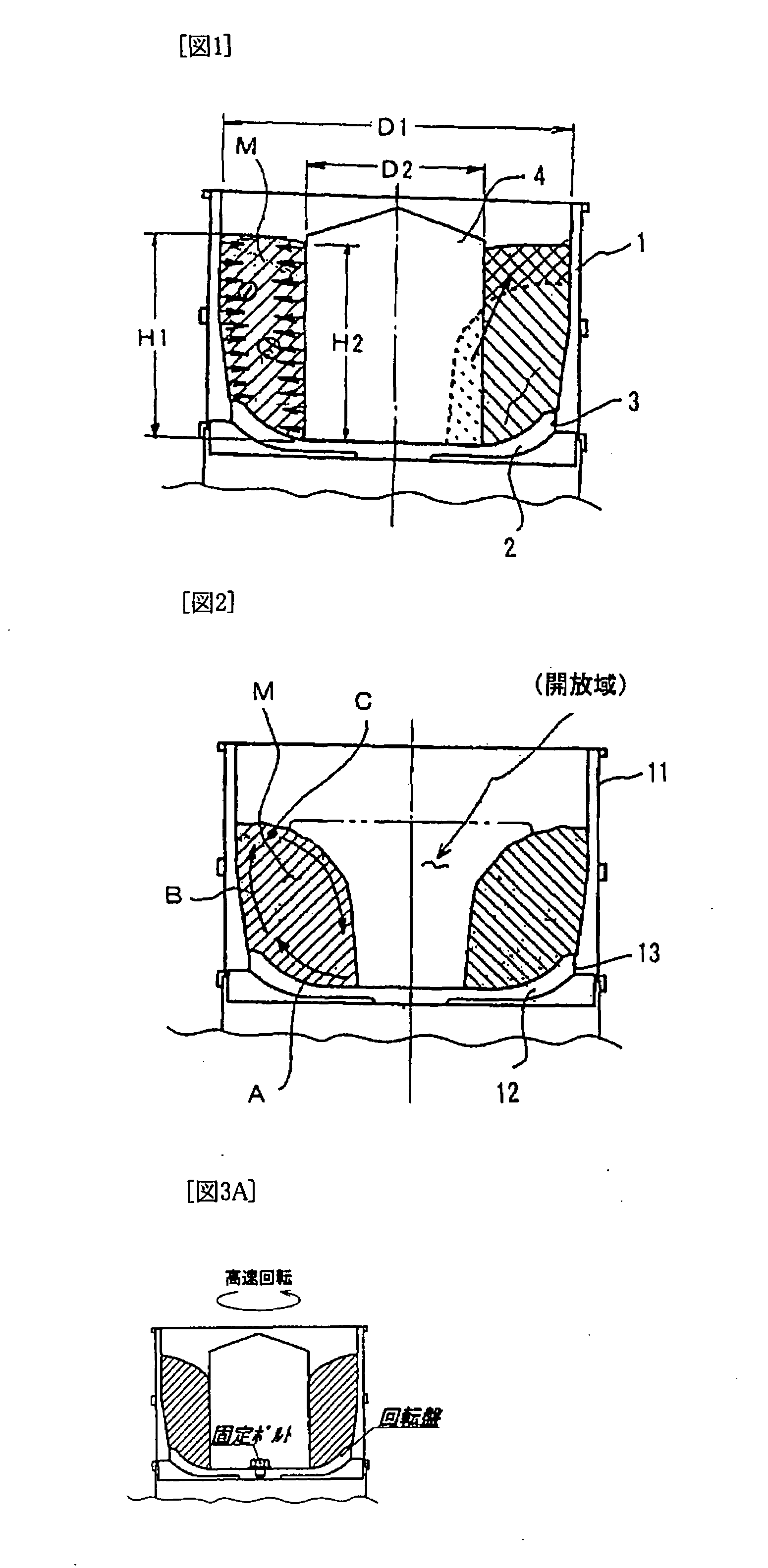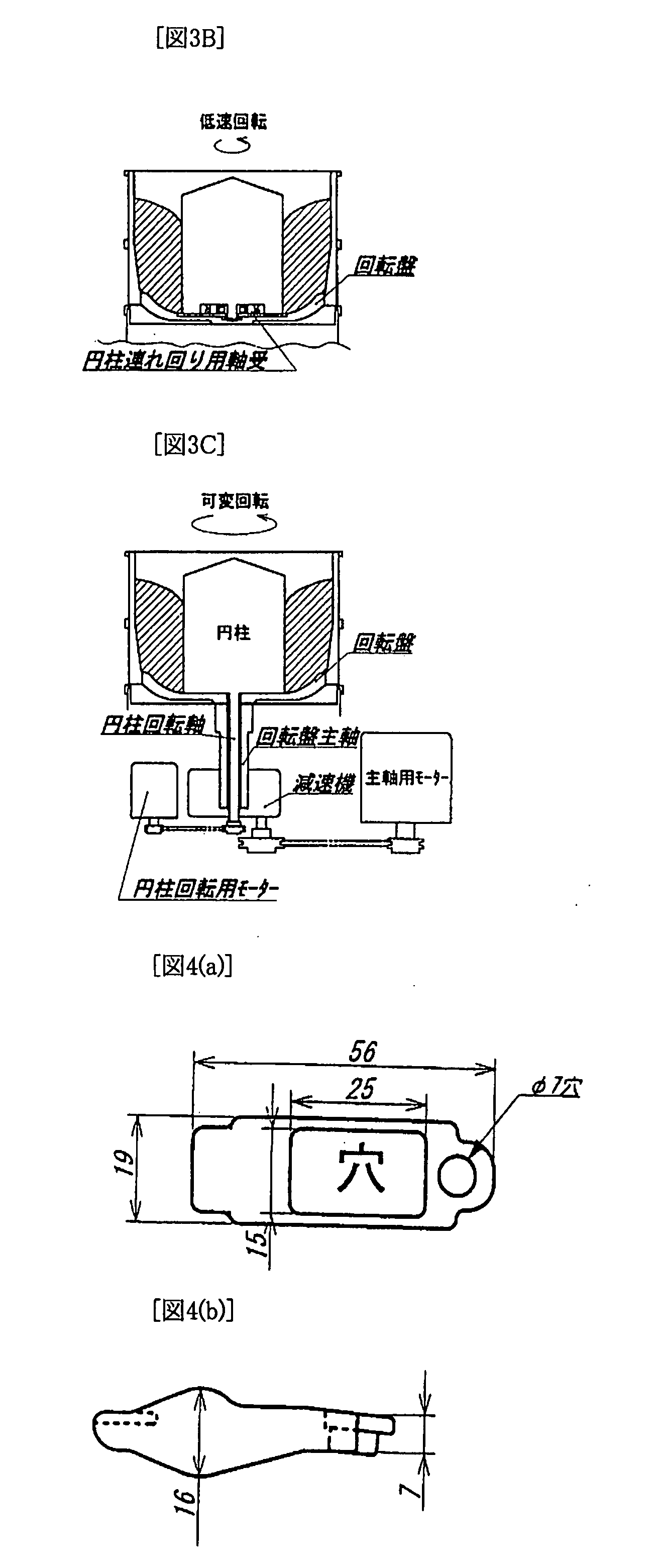Fluid Barrel-Polishing Device and Polishing Method
- Summary
- Abstract
- Description
- Claims
- Application Information
AI Technical Summary
Benefits of technology
Problems solved by technology
Method used
Image
Examples
examples 1 and 2
[0044]The fluid barrel-polishing devices that are shown in Table 1 were tested. Examples 1 and 2 had an inner cylinder 4 that was put on the center of rotation of a turntable 2, but comparative example 1 had no inner cylinder. The common testing conditions were that hard test pieces made of a material S45C and soft test pieces made of a material A2017 were used as the objects to be polished (hereafter, “workpieces”), a material that had a cone shape with a 20 mm bottom diameter, an abrasive compound, and water, were used as an abrasive material (hereafter, “media”), the velocity of the rotation of the turntable 2 was 250 min−1, and the time for polishing was 30 min.
[0045]The inner cylinder 4 of examples 1 and 2 had a diameter of 220 mm. In example 1, it was tightly fixed on the center of rotation of the turntable 2, as shown in FIG. 1, and the velocity of its rotation was the same as that of the turntable 2 (250 min−1). In example 2, the inner cylinder 4 was not tightly fixed on the...
examples 3 , 4
EXAMPLES 3, 4, and 5
[0058]The fluid barrel-polishing devices that were listed in Table 3 were tested. Examples 3, 4, and 5 had an inner cylinder 4, which was put on the center of rotation of a turntable 2. But comparative example 2 had no inner cylinder. The common testing condition was that actual workpieces, which were rocker arms used as automotive parts and were made of SCM, were used as the objects to be polished (workpieces). Test pieces that were made of the same material as the actual workpieces were used for reference. Fired ceramic that was harder, smaller, and had a larger specific gravity than the one used in examples 1 and 2, an abrasive compound, and water were used as media. The velocity of the rotation of the turntable 2 was 250 min−1, and the time for polishing was 30 min. The shape of the workpiece, which is the rocker arm used as an automotive part, is shown in FIG. 4.
[0059]As for the inner cylinder 4, in examples 3 and 4 the outside diameter of it was 220 mm, whi...
PUM
| Property | Measurement | Unit |
|---|---|---|
| Volume | aaaaa | aaaaa |
| Volume | aaaaa | aaaaa |
| Time | aaaaa | aaaaa |
Abstract
Description
Claims
Application Information
 Login to View More
Login to View More - R&D
- Intellectual Property
- Life Sciences
- Materials
- Tech Scout
- Unparalleled Data Quality
- Higher Quality Content
- 60% Fewer Hallucinations
Browse by: Latest US Patents, China's latest patents, Technical Efficacy Thesaurus, Application Domain, Technology Topic, Popular Technical Reports.
© 2025 PatSnap. All rights reserved.Legal|Privacy policy|Modern Slavery Act Transparency Statement|Sitemap|About US| Contact US: help@patsnap.com



